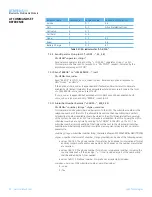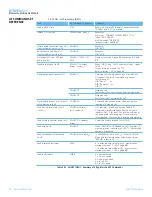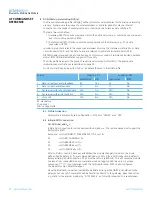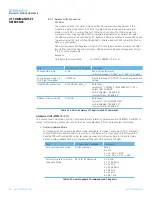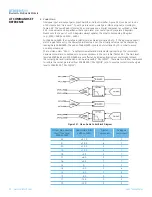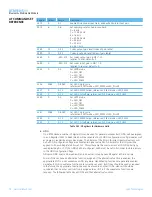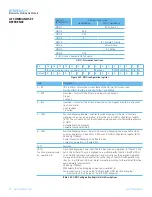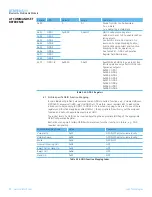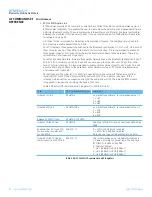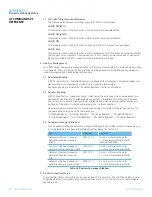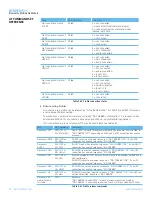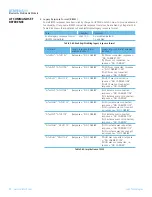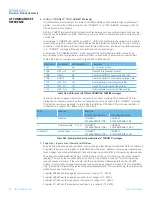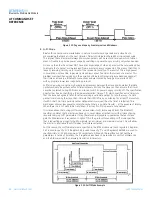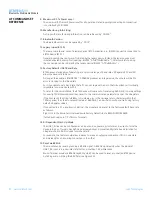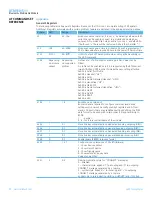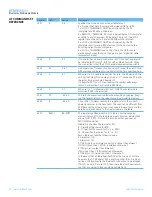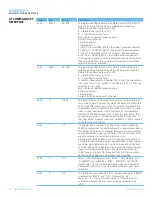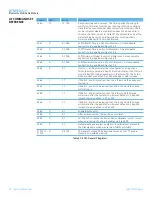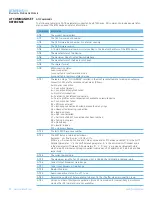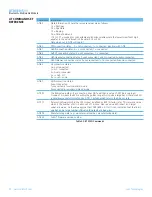
82
www.lairdtech.com
Laird Technologies
BTM510/511
Bluetooth
®
Multimedia Module
1.1 SCO / eSCO Asynchronous Messages
The following asynchronous messages apply to SCO/eSCO connections.
AUDIO ON (SCO)
This response is sent to the host when a SCO channel has been established.
AUDIO ON (eSCO)
This response is sent to the host when a eSCO channel has been established.
AUDIO OFF
This response is sent to the host when an existing SCO/eSCO channel has been closed.
AUDIO FAIL
This response is sent to the host when a SCO channel setup fails. This might be caused by the fact
that the peer only accepts eSCO connections but a SCO connection was requested or vice versa.
Please try to initiate the SCO connection with the remaining link type.
2. Link Key Management
On a BTM device, link keys are managed by the AT firmware. Appropriate AT commands are described
in on page 24. There is a range of S Registers defining the behavior of automatic link key storage on
incoming/outgoing and dedicated/general bonding.
2.1 Dedicated Bonding
In BT2.1 specification, “dedicated bonding” is defined as the exchange of link keys between two
devices without the intention of establishing a connection immediately.
Dedicated bonding is initiated by “AT+BTW<BdAddr>” (initiation of pairing).
2.2 General Bonding
In BT2.1 specification, “general bonding” is defined as the exchange of link keys between two
devices with the intention of establishing a connection immediately. This is the case if a device
tries to connect to another device without existing link key. Hence, pairing (authentication and
exchange of link keys) is initiated automatically prior to the connection.
General bonding is initiated by a connection requesting AT command if there is no link key for
the peer device existing. Such AT commands are:
“AT+SPD<BdAddr>”, “AT+APD<BdAddr>”, “AT+AVD<BdAddr>”, ”AT+HSD<BdAddr>”,
“AT+HSGD<BdAddr>”, “AT+HFD<BdAddr>”, “AT+HFGD<BdAddr>”, “AT+DUD<BdAddr>”
2.3 Automatic storage of link keys
Four S Registers define the automatic storage of link keys in the trusted device list, depending on
incoming/outgoing and general/dedicated bonding. Please see Table 3.59.
Task
S-Register
Comment
Automatic link key storage on
dedicated bonding outgoing
(DBO)
S325 [0..1]
0 = do not store (cache only)
1 = store automatically (default)
identical with S538
Automatic link key storage on
general bonding outgoing (GBO)
S326 [0..1]
0 = do not store (cache only)
1 = store automatically (default)
Automatic link key storage on
dedicated bonding incoming
(DBI)
S327 [0..1]
0 = do not store (cache only)
1 = store automatically (default)
Automatic link key storage on
general bonding incoming (GBI)
S328 [0..1]
0 = do not store (cache only)
1 = store automatically (default)
Table 3.59: Automatic storage of link keys
3. Profile Connection Status
The connection status of a profile can be queried by an ATI-Command. This might be helpful in order
to decide whether to disconnect all connected profiles (via ATH*) or a certain one. For details please
see Table 3.60.
AT COMMAND SET
REFERENCE


